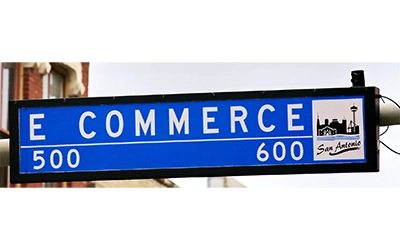Table of Contents
Four Components of eCommerce
Four Distinct Quadrants of eCommerce
Web Development
Digital Marketing
Fulfillment & Logistics
Customer Service
Conclusion
Key Learnings
There are four unique functions for successful eCommerce stores
Web Development, Digital Marketing, Fulfillment & Logistics & Customer Service
Web Development & Digital Marketing make up the Acquisition component of eCommerce
Fulfillment & Logistics and Customer Service help with customer retention
At Capstone we break down eCommerce to four distinct quadrants that have unique tasks. Each of the functions needs to be aligned into one process for your eCommerce business to function profitably. When the four quadrants of our eCommerce wheel are aligned your eCommerce store will provide customers with a great user experience.
Let’s dig into the four quadrants and examine the functions of each one. At the end of this post, we will provide a breakdown of costs for each of the quadrants to give you an idea of what you will need to budget for an eCommerce store.
Our eCommerce wheel assumes you have already strategized and determined the objectives for your website.
The first decision that needs to be made when developing your website. Are you going to build your own website or hire a professional developer? We won’t dig deep into the pros and cons of a DIY option or a professionally built eCommerce site. Just consider, do you want to be spending time on building and managing an eCommerce store or do you want to be spending time on your business?
For your eCommerce website you will need to include the following items in your web development plans.
A domain name that represents your business.
Choose the right platform for your business. BigCommerce, WooCommerce
and Shopify are platforms to consider for your eCommerce store.Security SSL, purchase the appropriate security certificate.
Analytics software
In order to complete the web development decide on your product, pricing and merchandising strategy. Decisions will need to be made on how you want to price your products, merchandise your products – photos, packaging, etc.

Visit the Capstone Website Design Blog Page
2. Digital Marketing
Now that you have started building your eCommerce presence with a quality website, it is time to start marketing your eCommerce business. There are two types of digital marketing you should consider once your website development is complete.
• Organic Marketing:
Search Engine Optimization: Search Engine Optimization (SEO) is the process of creating content that uses “Keywords”. Short and Long Tail keywords are words and terms searchers use in a web browser looking for a product or service.
Your website developer and/or SEO specialist should conduct keyword research and write copy that includes these keywords. Using keywords that represent your content helps Google understand what your website is about and provide appropriate content to searchers.
Blogging and Vlogs: Blogs are a tool that content creators use to explain, communicate, and
market content on their websites, and other online platforms. Typically the content is an expression of the creator’s expertise and strives to help the blog writer build a reputation as an expert in their field.Blogs are typically placed on an eCommerce website to help build domain authority and grow awareness of the products and services you provide to solve potential customers’ problems.
• Search Engine Marketing
Paid Advertising (PPC): Google, Bing, and Yahoo are examples of search engines that have paid advertising programs available to eCommerce providers. Typically, online advertisers can target geographic markets, demographics, and even psychographics.
eCommmerce advertisers can develop their own strategies campaigns and budgets. PPC advertising is easy to measure and determine the results. PPC advertising is also efficient, you only pay for advertisements that have been clicked and viewed.
3. Fulfillment & Logistics
How will you pick and pack orders? Every eCommerce store needs a plan to accept orders, process payments, manage inventory and set up products for shipping. For larger eCommerce stores with the budget and volume of orders, you should consider fulfillment and shipping software such as Shipstation.
eCommerce Fulfillment and Shipping software will gather orders, and segregate them based on criteria you determine. They can pick a shipping provider based on the cost, shipping criteria, and end-user location. Fulfilling and shipping eCommerce orders can be one of the most time-consuming and costly components of eCommerce.
Don’t overlook payment processing as part of your eCommerce store. Vendors such as Stripe and Braintree can handle all of the important details of online payments. They specialize in payment security, fraud detection, funds collection, and dispersal and can make the eCommerce payment process seamless.
COMPLETE OUR BOOK A CALL REQUEST
4. Customer Service:
A good customer service plan is vital to the ongoing success of an eCommerce store. Customers will have questions, concerns, and confusion that need to be addressed. How an eCommerce store handles customer service issues will be a deciding factor in customer satisfaction.
Repeat purchases, opportunity selling, and solving customer problems are sure winners to help turn customers into raving fans who help spread the word about your amazing product and services.
Your website developer can help add customer service tools to your website including chat, automated email responses, and more. Automated emails help your brand stay connected with customers, and inform them of order progress, shipping details, and reminders to complete an order.
Emails can also inform customers of upcoming deals, new products, and other important brand information.
Conclusion:
How will you manage your eCommerce Store? For ongoing success that meets the needs of your customers, drives revenue growth, and ensures long-term eCommerce success, pay close attention to all four quadrants of our eCommerce wheel.
For more learnings on Website and eCommerce Tips, Facts, and Learnings visit our blog or YouTube channel.
More Learning Opportunities from Capstone Website Design

Why eCommerce?
eCommerce, also known as electronic commerce, is the buying and selling of goods or services over the Internet.

WHY ECOMMERCE IS THE FUTURE OF SMALL BUSINESS SALES
In the past decade, eCommerce has changed the way we shop and do business.



